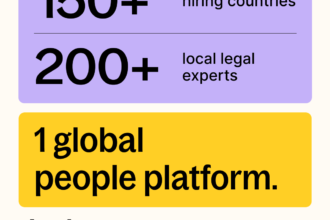As businesses expand globally, hiring and managing international talent becomes a crucial aspect of success. However, global recruitment comes with challenges such as compliance with local labor laws, cultural differences, and payroll complexities. In this guide, we’ll explore strategies for recruiting, onboarding, and managing international employees effectively.
Key Challenges in Global Talent Acquisition and Management
1. Navigating Local Employment Laws
Each country has unique labor laws, covering employment contracts, working hours, termination policies, and benefits. Businesses must ensure compliance to avoid legal risks.
2. Work Visas and Immigration Compliance
Hiring foreign employees often requires work permits and visas. Understanding immigration policies is essential to prevent delays and legal issues.
3. Cultural and Language Barriers
Managing a diverse workforce means addressing communication challenges, different work ethics, and expectations. Companies must foster inclusivity and cultural awareness.
4. Global Payroll and Compensation Management
Ensuring employees are paid accurately and on time, while complying with country-specific tax regulations, is a major challenge in international hiring.
5. Employee Engagement and Retention
Retaining international employees requires localized benefits, professional development opportunities, and strong workplace culture.
Best Practices for Recruiting and Managing Global Talent
1. Partner with an Employer of Record (EOR)
An EOR handles compliance, payroll, and employee contracts, allowing businesses to hire talent in multiple countries without setting up legal entities.
2. Leverage Global Job Platforms and Recruitment Agencies
Using platforms like LinkedIn, Indeed, and local job boards helps businesses attract top international talent.
3. Standardize the Hiring Process with Local Adaptations
While maintaining a structured recruitment process, companies should customize job offers, benefits, and onboarding to align with local expectations.
4. Invest in HR Technology and Automation
Global HR management systems streamline payroll, compliance tracking, and employee engagement for international teams.
5. Offer Competitive Compensation and Benefits
Providing competitive salaries, remote work options, and region-specific benefits enhances employee satisfaction and retention.
6. Develop a Strong Onboarding and Training Program
Ensuring new hires receive cultural training, compliance education, and role-specific guidance helps them integrate smoothly into the company.
Conclusion
Recruiting and managing international talent requires a strategic approach that balances compliance, cultural awareness, and effective HR management. By leveraging EOR services, HR technology, and strong employee engagement practices, businesses can build a productive and diverse global workforce.







